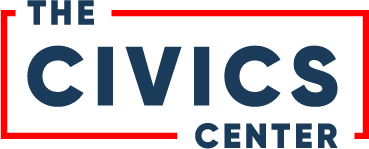Why I’m obsessed with high school voter registration
Welcome to 2021. As we look ahead, we know our democracy will continue to face challenges. We also know that young people care and will turn out to vote if they are registered.
Nearly every current high school senior in the U.S. can register to vote before their graduation. Florida and North Carolina both allow preregistration beginning at 16. Nevada allows it beginning at 17. Georgia and Michigan allow it beginning at 17 1/2. In Arizona, students who will be 18 by November 2022 can register now. In Ohio, students who will be 18 by November 2021 can register now. Pennsylvania, Wisconsin, and Texas have laws that are more restrictive or that vary by county, but even in those states, efforts to register high school students before graduation can make a huge impact. We know that supporting voter registration in high school communities is one of the most effective, efficient, and equitable ways to increase youth civic engagement.
Why am I obsessed? It’s the numbers.
The chart below illustrates the power young people have in select states to influence electoral outcomes on the issues they care about.
Potential Youth Electoral Impact by 2022 and 2024
Sources: U.S. Census and AP
So what are the obstacles? Our schools and school districts generally lack the infrastructure (budget, training, planning, programs) to help their students register to vote before graduation. Some states make it hard for young people to register, such as by incorporating restrictive ID requirements into their online voter registration systems. And automatic voter registration systems at state departments of motor vehicles miss many young voters who are not getting driver’s licenses or who are not old enough to register at the time they interact with the DMV.
But the biggest obstacle is a lack of knowledge, attention, and organizing. Many teachers, school administrators, and students don’t realize that students under 18 can register to vote in virtually every state. Without this basic knowledge, schools and school districts will not allocate resources to high school voter registration.
Most people also don’t appreciate how the school calendar interacts with the campaign calendar. If we don’t register students every spring, it becomes much harder to do so in the years after they graduate. Waiting to register students until the Fall before a federal election is not very effective because few high school students are old enough to vote at the beginning of the school year, and candidate spending focuses on those who will be eligible in the immediately upcoming election. Focussing on colleges is great, but misses many young people who do not attend college with disproportionate impacts on BIPOC students. These challenges, if left unaddressed, will continue to result in low youth voter registration, which is what drives low youth turnout.
Our plan to increase youth voter registration is to give students the power and tools to organize and register themselves. We help them learn how to organize and how to connect the stories of their lives with larger public issues. This is a critical ingredient that motivates students to engage in elections and to engage their communities. We can amplify their voices on social media. They can leverage their own social networks and stories to increase registration. This, along with working with a broad and diverse array of youth, democracy, and voting and civil rights groups, is the best and least expensive way we know to create a cultural climate of youth voting.
Ensuring this path to success requires sustained efforts to push for legal and policy reforms, connect with and encourage high school students to register, and develop the organizing structure necessary for high schools to help their students become voters.
We are excited about the chance to make a difference in the year ahead.

